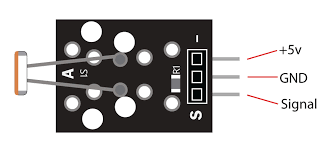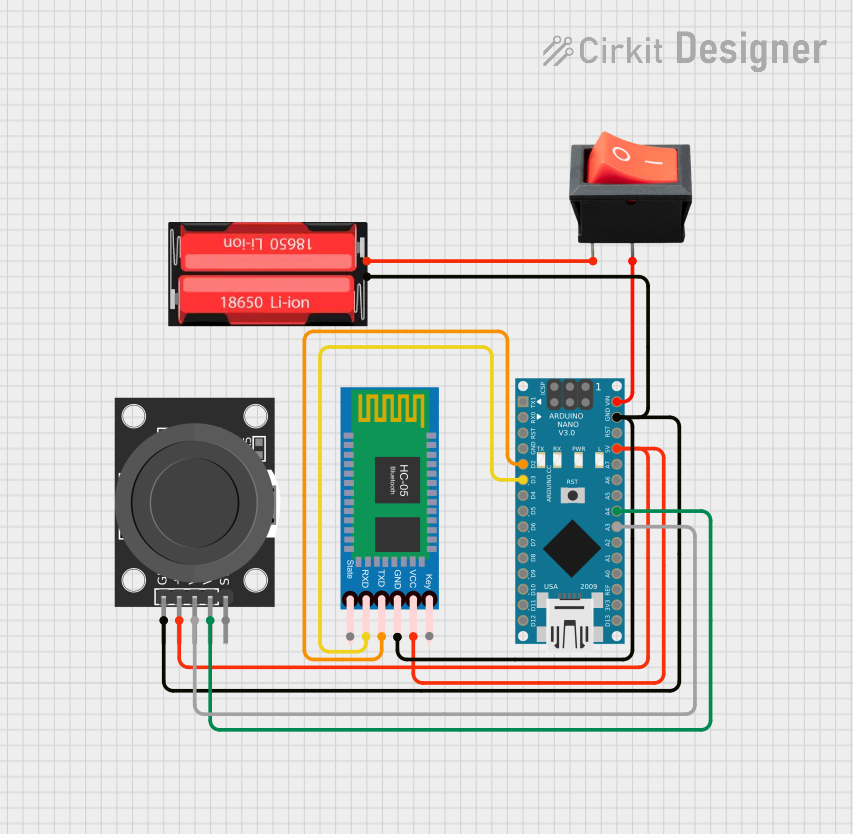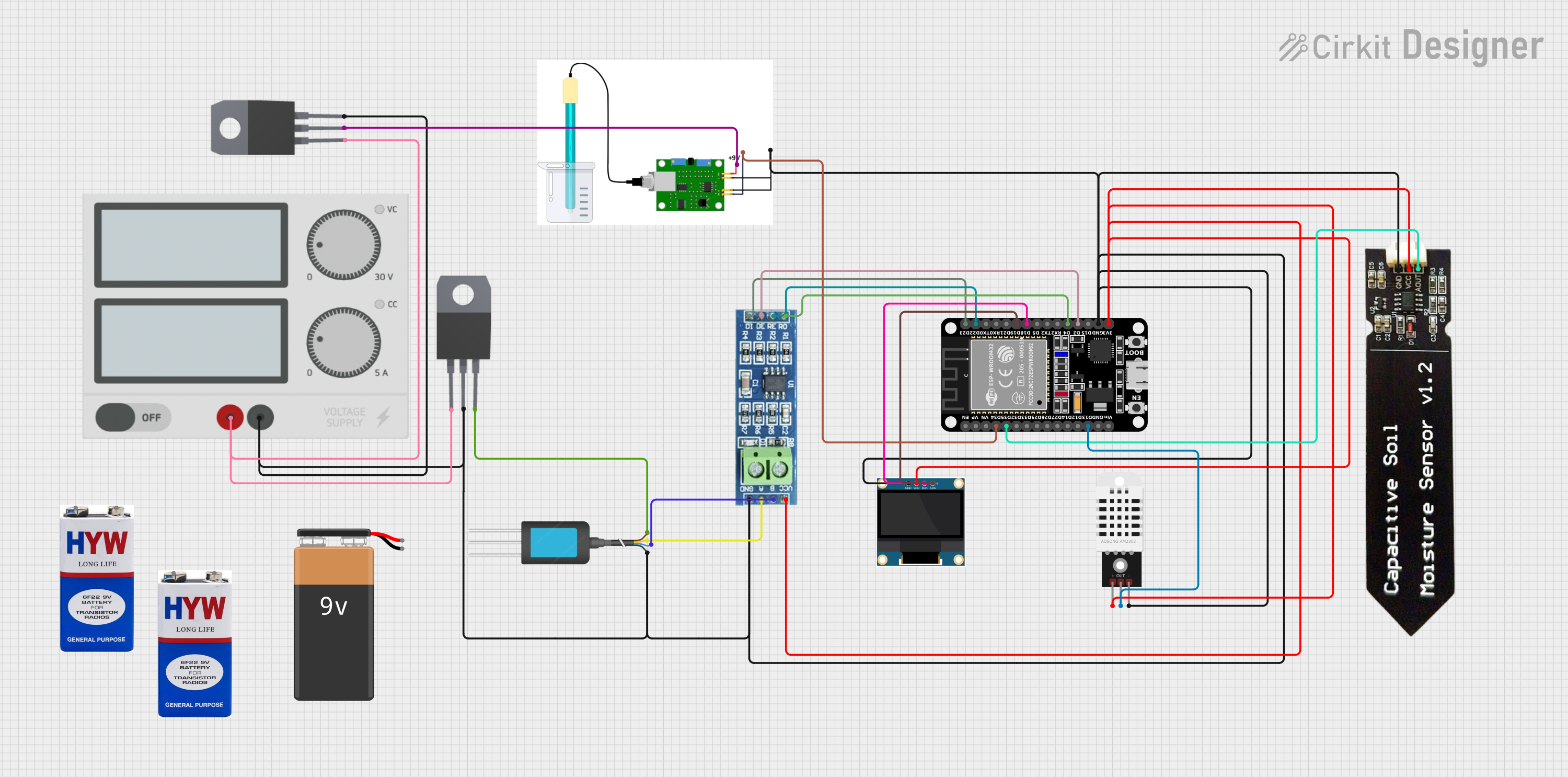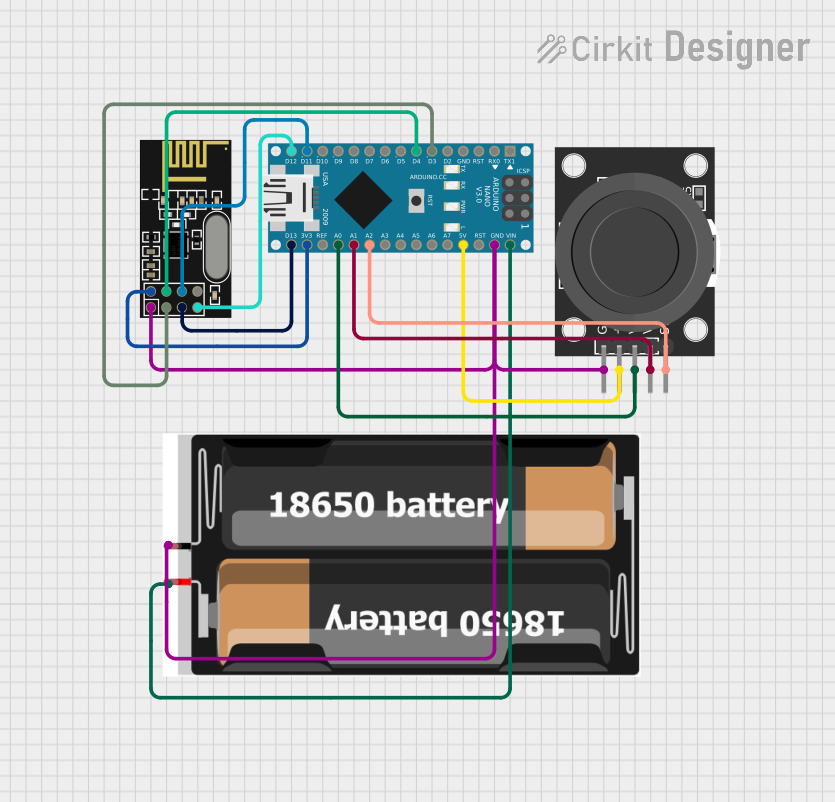
How to Use ky018: Examples, Pinouts, and Specs

 Design with ky018 in Cirkit Designer
Design with ky018 in Cirkit DesignerIntroduction
The KY-018 is a temperature sensor module manufactured by ESP32 with the part ID 18. It is based on the LM35 temperature sensor, which provides a linear analog output proportional to the temperature in degrees Celsius. This module is widely used in temperature monitoring and control applications due to its simplicity, accuracy, and ease of interfacing with microcontrollers.
Explore Projects Built with ky018

 Open Project in Cirkit Designer
Open Project in Cirkit Designer
 Open Project in Cirkit Designer
Open Project in Cirkit Designer
 Open Project in Cirkit Designer
Open Project in Cirkit Designer
 Open Project in Cirkit Designer
Open Project in Cirkit DesignerExplore Projects Built with ky018

 Open Project in Cirkit Designer
Open Project in Cirkit Designer
 Open Project in Cirkit Designer
Open Project in Cirkit Designer
 Open Project in Cirkit Designer
Open Project in Cirkit Designer
 Open Project in Cirkit Designer
Open Project in Cirkit DesignerCommon Applications and Use Cases
- Environmental temperature monitoring
- HVAC (Heating, Ventilation, and Air Conditioning) systems
- Industrial temperature control systems
- Weather stations
- Home automation projects
- Educational and prototyping purposes
Technical Specifications
The KY-018 module is designed for accurate and reliable temperature sensing. Below are its key technical details:
| Parameter | Value |
|---|---|
| Manufacturer | ESP32 |
| Part ID | 18 |
| Sensor Type | LM35 (Analog Temperature Sensor) |
| Operating Voltage | 4V to 30V |
| Output Voltage Range | 0V to 1.5V (for -55°C to 150°C) |
| Temperature Range | -55°C to +150°C |
| Accuracy | ±0.5°C (at 25°C) |
| Output Sensitivity | 10mV/°C |
| Power Consumption | Low |
| Dimensions | 18mm x 10mm x 8mm |
Pin Configuration and Descriptions
The KY-018 module has three pins for easy interfacing:
| Pin | Name | Description |
|---|---|---|
| 1 | VCC | Power supply pin (4V to 30V) |
| 2 | GND | Ground pin |
| 3 | OUT | Analog output pin that provides a voltage proportional to the temperature |
Usage Instructions
The KY-018 module is straightforward to use in a circuit. Follow the steps below to integrate it into your project:
Connecting the KY-018 to a Microcontroller
- Power the Module: Connect the
VCCpin to a 5V power supply (or 3.3V if supported by your microcontroller) and theGNDpin to the ground. - Read the Output: Connect the
OUTpin to an analog input pin on your microcontroller to read the temperature as an analog voltage. - Convert Voltage to Temperature: Use the formula below to calculate the temperature in degrees Celsius: [ \text{Temperature (°C)} = \frac{\text{Analog Voltage (mV)}}{10} ]
Example: Using KY-018 with Arduino UNO
Below is an example code snippet to read temperature data from the KY-018 module using an Arduino UNO:
// KY-018 Temperature Sensor Example with Arduino UNO
// Reads the analog output from the KY-018 and converts it to temperature in °C
const int sensorPin = A0; // KY-018 OUT pin connected to Arduino analog pin A0
float temperature; // Variable to store the calculated temperature
void setup() {
Serial.begin(9600); // Initialize serial communication at 9600 baud
}
void loop() {
int sensorValue = analogRead(sensorPin); // Read the analog value from the sensor
float voltage = sensorValue * (5.0 / 1023.0); // Convert ADC value to voltage
temperature = voltage * 100.0; // Convert voltage to temperature (10mV/°C)
// Print the temperature to the Serial Monitor
Serial.print("Temperature: ");
Serial.print(temperature);
Serial.println(" °C");
delay(1000); // Wait for 1 second before the next reading
}
Important Considerations and Best Practices
- Power Supply: Ensure the module is powered within its operating voltage range (4V to 30V). Exceeding this range may damage the sensor.
- Analog Pin Resolution: For accurate readings, use a microcontroller with a high-resolution ADC (e.g., 10-bit or higher).
- Noise Reduction: Use decoupling capacitors near the power pins to reduce noise and improve stability.
- Temperature Range: Avoid exposing the sensor to temperatures beyond its specified range (-55°C to +150°C) to prevent damage or inaccurate readings.
Troubleshooting and FAQs
Common Issues and Solutions
No Output or Incorrect Readings
- Cause: Incorrect wiring or loose connections.
- Solution: Double-check the wiring and ensure all connections are secure.
Fluctuating or Noisy Readings
- Cause: Electrical noise or insufficient power supply filtering.
- Solution: Add a 0.1µF decoupling capacitor between
VCCandGNDpins.
Output Voltage Does Not Change with Temperature
- Cause: Faulty sensor or incorrect analog pin configuration.
- Solution: Test the sensor with a multimeter and verify the microcontroller's analog pin setup.
Temperature Readings Are Inaccurate
- Cause: Calibration error or incorrect voltage-to-temperature conversion.
- Solution: Verify the conversion formula and ensure the power supply voltage is stable.
FAQs
Q1: Can the KY-018 module be used with a 3.3V microcontroller like ESP32?
A1: Yes, the KY-018 can operate at 3.3V. However, ensure the output voltage range is compatible with the ADC input range of your microcontroller.
Q2: How do I measure negative temperatures with the KY-018?
A2: The LM35 sensor outputs a negative voltage for temperatures below 0°C. Use a microcontroller or circuit capable of reading negative voltages, or add a level-shifting circuit.
Q3: Can I use the KY-018 for long-term temperature monitoring?
A3: Yes, the KY-018 is suitable for long-term use. Ensure proper environmental protection if used in harsh conditions.
Q4: What is the maximum cable length for connecting the KY-018 to a microcontroller?
A4: The maximum cable length depends on the quality of the cable and the environment. For best results, keep the cable length under 1 meter and use shielded cables in noisy environments.